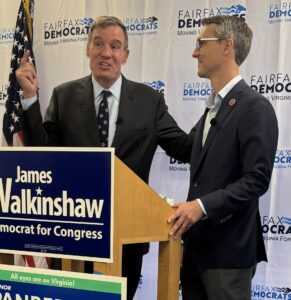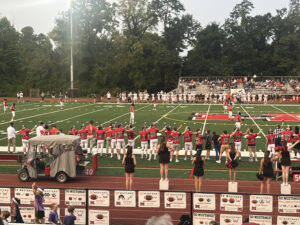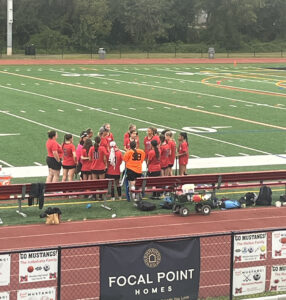When a student goes to school, they may be expecting to learn about mathematics, science, history and more academic-based subjects. However, at Falls Church’s Mary Ellen Henderson Middle School, students are being taught ways to emphasize dialogue and connections with one’s self and others.
Inside Henderson Middle School classrooms, teachers are using what is called Restorative Practices to promote accountability amongst peers and restore “broken relationships” through peer mediation in the form of a circle.
According to an article by the International Institute for Restorative Practices, Restorative Practices is a field within the social sciences that studies how to strengthen relationships between individuals, as well as social connections within communities. These practices have deep roots within indigenous communities throughout the world.
MEHMS Special Education teacher Sara Tennyson teaches “social emotional learning” for the school’s social emotional learning flex classes. Tennyson told the News-Press in an interview this week that the creation of the Restorative Practices circle has been about eight years in the making. She began being trained in the practices in 2016, which initially she had never heard about.

“Restorative practices are on a continuum,” Tennyson said. “The very beginning of the continuum is effective statements and on the other end are the harm circles.”
In her classroom, Tennyson helps students learn and experience restorative dialogue and justice through the use of circles in a classroom setting. The point and purpose of having these types of circles is to “promote organic communication” as well as “connectedness,” according to Tennyson.
One student in the FCCPS video on the subject said a typical day in the classroom begins with daily “check-ins,” which can be a way to find out if a person is “upset or not” and to “help comfort them” if they need to be comforted.
Tennyson said another purpose of having the circle is that it’s “never-ending,” as students take what they have learned in the circle outside of the classroom and use it throughout the school day. So far, she said she has seen a “tremendous increase in the communication skills” with her students, as well as in maintaining eye contact with one another when speaking.
“I have seen just a huge increase in students’ ability to communicate,” Tennyson said.
There are also Restorative Justice Circles used in the classroom that are focused on harm and misbehavior. These circles can be used to help someone in the classroom or at school who has done something to harm others. They are also a way to teach students, staff and adults that “when harm is done in the community, it doesn’t affect just one person, but affects the entire well-being of the whole community.” The circles can give the victim a chance to share how they were impacted by the offender’s actions or words, while also allowing the opportunity for the offender to take accountability and apologize for their actions/words.
According to Tennyson, the Restorative Justice Circles can be a way to counteract the impact of punitive measures placed in a school, such as detention, suspension and/or expulsion. For example, if a student is suspended for five days of school, they are not only missing academic time and falling further behind, but are given a message that he or she is not wanted at the school.
“Granted, there are definitely circumstances that do require an out-of-school suspension,” Tennyson stated. “However, Restorative Practices aims to mediate that and say ‘You’re taking accountability, [instead of] just going out of school for five days.’”
In December, the class shifted focus into “authenticity building,” which Tennyson said transitioned from “non-confrontational” questions to more “vulnerable” questions such as what would one do to change their school day.
As for how these Restorative Practices Circles can be important for various other school systems, Tennyson said they are “vital to school culture, communication and rapport building with students.” She further stated she has had other staff members join the circles and a mutual agreement has been reached that more such “emotional learning” should be taught in the classrooms.












